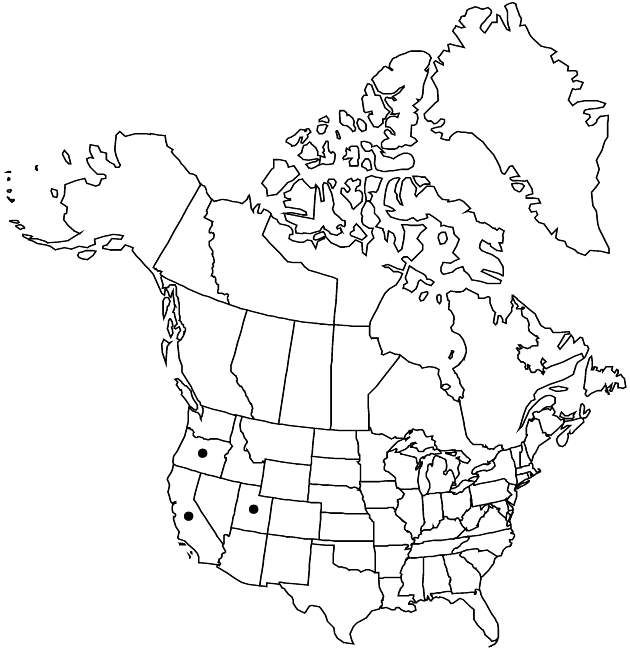Difference between revisions of "Crepis bakeri subsp. cusickii"
Publ. Carnegie Inst. Wash. 504: 140. 1938.
Common names: Cusick’s hawksbeard
Endemic
Basionym: Crepis cusickii Eastwood Bull. Torrey Bot. Club 30: 502. 1903
Treatment appears in FNA Volume 19. Treatment on page 226.
imported>Volume Importer |
imported>Volume Importer |
||
| Line 57: | Line 57: | ||
|publication year=1938 | |publication year=1938 | ||
|special status=Endemic | |special status=Endemic | ||
| − | |source xml=https:// | + | |source xml=https://bitbucket.org/aafc-mbb/fna-data-curation/src/2e0870ddd59836b60bcf96646a41e87ea5a5943a/coarse_grained_fna_xml/V19-20-21/V19_279.xml |
|tribe=Asteraceae tribe Cichorieae | |tribe=Asteraceae tribe Cichorieae | ||
|genus=Crepis | |genus=Crepis | ||
Latest revision as of 20:50, 5 November 2020
Plants 8–16 cm. Leaves 8–12 × 2–2.5 cm, deeply lobed, lobes triangular, dentate, faces tomen-tose. Heads 1–4(–10). Calyculi: bractlets lanceolate (longest ± 1/2 phyllaries). Involucres broadly cylindric, 13–17 mm in fruit. Cypselae dark brown, 6–9(–10) mm, narrowed and strongly tapered at apices; pappi 6–9 mm. 2n = 22, 33.
Phenology: Flowering Jun–Jul.
Habitat: Dry open places, sagebrush scrub
Elevation: 1200–2200 m
Distribution

Calif., Oreg., Utah.
Discussion
Subspecies cusickii is usually smaller than subsp. bakeri.
Selected References
None.
Lower Taxa
None.